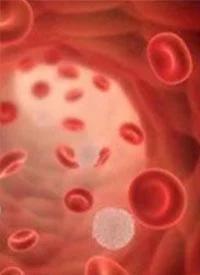Pacritinib Pretreatment Demonstrates Intriguing Interim Findings in Myelofibrosis
Pretreatment with the investigational JAK2/FLT3 inhibitor pacritinib prior to allogeneic stem cell transplant was shown to be feasible and safe in patients with primary, post-polycythemia vera or post-essential thrombocythemia myelofibrosis.

Pretreatment with the investigational JAK2/FLT3 inhibitor pacritinib prior to allogeneic stem cell transplant (allo-SCT) was shown to be feasible and safe in patients with primary, post-polycythemia vera (PV) or post-essential thrombocythemia (ET) myelofibrosis, according to preliminary findings from the ongoing phase 2 HOVON-134 trial that were presented during the virtual 2020 European Hematology Association Annual Congress.
Among 18 patients included in the interim analysis, 11 underwent allo-SCT and had a posttransplant follow-up of at least 6 months. Additional findings showed that 2 patients received a stem cell boost due to poor graft function 46 and 106 days following allo-SCT. One of the 11 patients who underwent allo-SCT died due to infection-related complications and multi-organ failure 143 days after allo-SCT.
The patient death was counted an event toward the primary end point of the proportion of patients with a failure within 180 days following transplant. Additional events that were considered a failure included primary graft failure, secondary graft failure, grade 3/4 acute graft-versus-host disease (aGVHD), or death due to any cause. Secondary end points included safety, quality of life, and disease response.
The primary objective of the study was to determine whether pretreatment with pacritinib has an effect on allo-SCT outcome. Pacritinib, like other JAK2 inhibitors, has shown clinical activity in managing patient symptoms, such as splenomegaly.
The study enrolled patients with intermediate-2 or high-risk primary, post-PV, or post-ET myelofibrosis based on the Dynamic International Prognostic Plus Scoring System (DIPPS-plus).
Patients received 3 28-day cycles of 200 mg of pacritinib twice-daily. In certain cases, logistical reasons permitted a fourth cycle of treatment.
Patients who experienced disease progression or for whom a suitable Human Leukocyte Antigen (HLA)-identical sibling donor or 10/10 matched unrelated donor (MUD) could not be found were treated off protocol. Patients who were pretreated with ruxolitinib (Jakafi) were eligible for enrollment; however, ruxolitinib needed to be stopped before beginning pacritinib.
All patients received a uniform conditioning regimen that consisted of busulfan, fludarabine, and anti–T-lymphocyte globulin (ATG-Neovii). From day 0 to day 28, patients received GVHD prophylaxis with mycophenolate mofetil. From 3 days before treatment to day 100 posttreatment, cyclosporine A was given for the same purpose.
Patients had a median age of 64, and 72% of patients were male. The majority of patients (72%) had a diagnosis of primary myelofibrosis while the remaining patients had post-PV
myelofibrosis. Additionally, 72% of patients had intermediate-2 DIPSS-plus risk, while the remaining 28% had high-risk disease.
Over half of patients (56%) were JAK2 inhibitor naïve. Thirty-nine percent of patients had previous toxic exposure to hydroxycarbamide, busulfan, and/or interferon alfa.
Additionally, 28% of patients required dose modification with pacritinib.
Patient characteristics varied slightly among non-transplanted patients (n = 7) and transplanted patients (n = 11). For example, 82% of patients who were transplanted had intermediate-2 disease compared with 57% of non-transplanted patients.
Additionally, 71% of non-transplanted patients required dose modification with pacritinib compared with none in the transplanted group. Of the 7 non-transplanted patients, 2 went off protocol due to donor unavailability, 3 had disease progression, and 2 discontinued due to adverse effects (AEs), including one cardiac event.
In the transplanted group, 45% of patients were transplanted via an HLA-identical sibling donor versus 55% with MUD.
More than half of patients (55%) did not experience aGVHD following transplant, and 45% of patients experienced grade 1/2 aGVHD. No cases of grade 3/4 aGVHD were observed.
Chronic GVHD (cGVHD) did not occur in 45% of patients after transplant; however, 2 patients each reported mild, moderate, and severe cGVHD.
Following allo-SCT, 3 patients derived a response based on European Leukemia Net guidelines. Moreover, 2 patients achieved a complete remission, 2 patients achieved a partial response, and 4 patients experienced clinical improvement following allo-SCT. There were no reports of stable disease or disease progression.
The HOVON-134 trial is ongoing and will continue to enroll patients until 38 transplanted patients are available for evaluation. This will allow for necessary statistical power to be met for the full analysis.
Reference:
te Boekhorst PAW, van der Holt R, Meijer E, et al. Interim analysis of a phase II trial (HOVON-134) in myelofibrosis patients (primary, post-ET or post PV-MF) treated with the JAK2 inhibitor pacritinib before RIC allogeneic stem cell transplantation. Presented at: 2020 European Hematology Association Congress; June 11-21, 2020; Virtual. Abstract EP1089.



